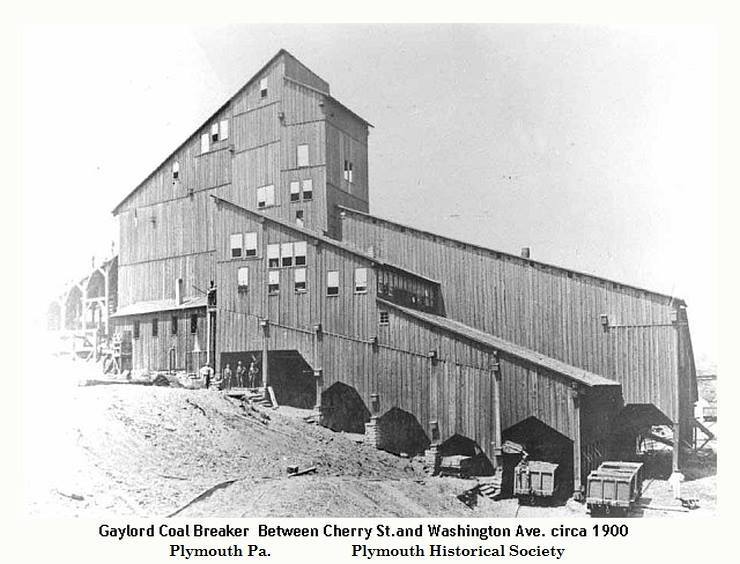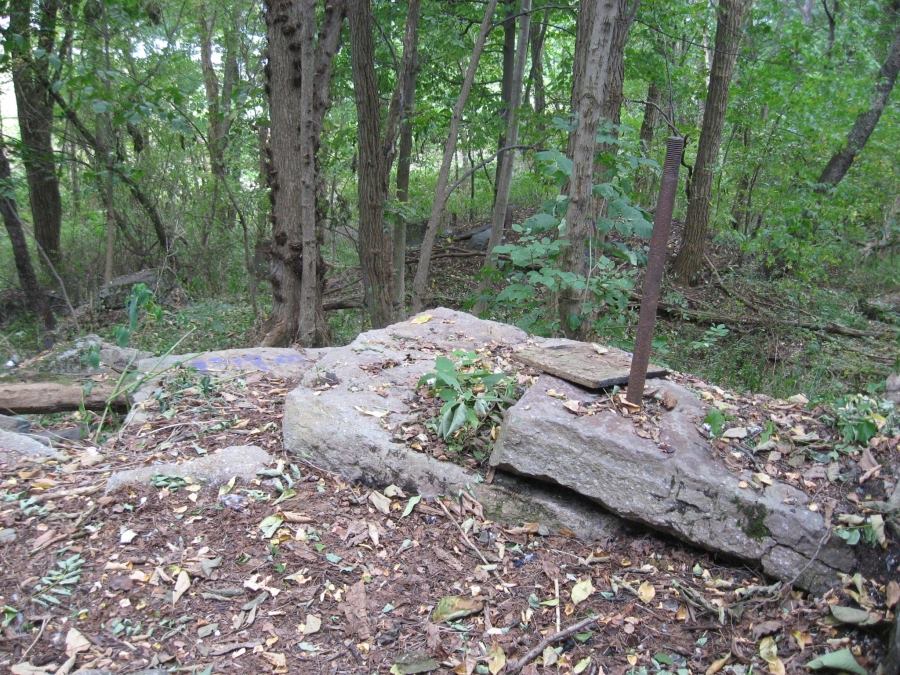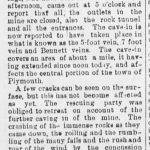We thank Steve Konrad for sharing this story and photo with us.

Recently, Steve Konrad from the Plymouth Historical Society in the Anthracite Coal Region of Northeastern Pennsylvania submitted some new photos to add to a previous post he submitted.
Steve writes, “I have been doing some additional research on Plymouth’s Gaylord Mine Disaster, that occurred on February 13, 1894. I was aware that six of the thirteen victims were buried at Plymouth’s Shawnee Cemetery and was interested in finding the burial locations of the remaining seven men. I found all of them, after a creative search for their obituaries. Also … the assistant foreman, Thomas H. Picton’s grandfather and three of his sons had perished in an 1844 mine disaster, in Wales. Joseph Picton age 43, James 15, Mark 13 and Joseph 11, were among the 40 men who perished in the Garden Pit Disaster, Landshipping, Pembrokeshire, Wales … I would appreciate it, if you could re-post the February 13, 2015 post with the additional information. I’ve attached a few other images that are relevant to the disaster. Thank you, for all that you do to preserve our anthracite coal-mining heritage!”
The original post back on Friday, February 13th, 2015 read as follows. To that story, we added a newspaper article from The Scranton Tribune of February 14, 1894 along with Steve’s picture (shown at the top).
“This Friday, February 13th will mark the 121st Anniversary of Plymouth’s Gaylord Mine Disaster. On February 13, 1894, thirteen men perished in the Gaylord Mine, near Cherry Street, in Plymouth. The cause of the disaster was a rapid cave in of a portion of the mine. Problems with the stability of the mine roof was known prior to the disaster, but, no one anticipated the extent of a cave in. At the time, the roof (ceiling) of the mine chambers was showing signs of a “squeeze” which means the roof was being pushed down, by the pressure of the ground above. Mine timbering, called props, were being bent and snapping under the incredible pressure. This was an extremely dangerous situation. At that point, the mine company had two choices, halt all work in the mine or continue to work at supporting the roof. After examination, they felt confident that the squeeze could be stabilized, by setting additional, larger props in place.
In the early morning hours of Tuesday, February 13th, Assistant Foreman Thomas Picton and twelve men were busy working deep underground, on supporting the mine roof. Suddenly, without warning, the ground above the mine collapsed. The cave in was so fast, that it was impossible for the men to escape. All thirteen men perished in the violent cave in, which contained an area of over 600 square yards.
During the recovery of the miners bodies, some men were found entombed, standing up, in a running position. On April 6th, the body of the last victim was brought out of the mine, it was Thomas Picton. Thomas and five fellow victims were buried at Plymouth’s Shawnee Cemetery. Their names are: Thomas Leyshon, Thomas Merriman, Thomas Cole, John D. Morris and Daniel W. Morgan. Victims buried at other local cemeteries are: Peter McLaughlin, Michael Welch, Thomas Jones, Richard Davis, James Kingdom, John Hammer and James Olds.
Today, other than some culm and a few stone blocks, little remains of the Gaylord Mine, where these brave men met their fate. Some of you who read this, may be related to those who perished at the Gaylord and many of you had relatives who worked in the mines.”

Did you have relatives that worked in the Gaylord Mine? Does your family have other experiences with mining disasters or accidents that you are willing to share?



